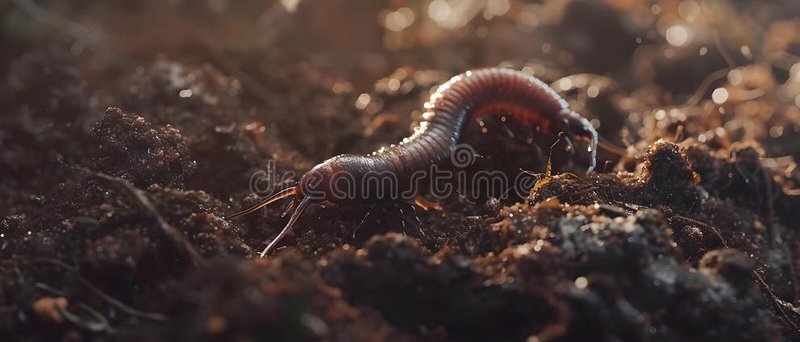
You might be wondering why this matters. Well, healthy oceans rely on nutrient cycling to support a myriad of life forms, from the smallest plankton to the largest whales. Without these tiny but mighty bristle worms, the delicate balance of marine ecosystems would tip, potentially leading to larger issues for marine life and, ultimately, for us. Let’s dive deeper into how these worms function and why they’re so important.
What Are Bristle Worms?
Bristle worms, belonging to the class Polychaeta, are segmented worms typically found in marine environments. These creatures vary in size and can be as small as a few millimeters or as long as several feet. They’re easily recognizable thanks to their bristle-like structures, known as chaetae, which extend from their bodies. These chaetae aid in locomotion, allowing bristle worms to move through sand, mud, or across substrates with ease.
There are many species of bristle worms, each with its unique characteristics and habitats. Some prefer the sandy bottoms of the ocean floor, while others thrive in deeper, more turbulent waters. Their adaptability makes them prevalent in many marine environments, whether it’s coastal waters, coral reefs, or deep-sea ecosystems.
Here’s the thing: bristle worms are more than just squiggly inhabitants of the sea floor. They play a critical role in the ecology of their environments. Not only do they help break down organic matter, but they also serve as a food source for various marine predators like fish and crustaceans. So, they’re vital in supporting the food web in aquatic ecosystems.
The Role of Bristle Worms in Nutrient Cycling
Nutrient cycling is the process by which nutrients are exchanged between living organisms and the environment. Bristle worms contribute significantly to this process by breaking down organic materials like dead plants and animals. Their feeding habits help convert this material into simpler forms that can be easily absorbed by plants and other organisms.
When bristle worms consume organic debris, they digest it and excrete it as nutrient-rich waste. This waste is often referred to as “marine snow,” which is a mix of tiny particles that rain down from the surface waters. This marine snow is crucial for phytoplankton, which rely on these nutrients to thrive.
You might be asking yourself, “But how does this affect me?” Well, healthy phytoplankton populations are vital for oxygen production and serve as the foundation of the ocean’s food web. Without bristle worms facilitating nutrient cycling, healthy phytoplankton growth would be stunted, potentially impacting everything from fish stocks to the air we breathe.
How Bristle Worms Enhance Sediment Quality
Bristle worms spend a lot of time interacting with sediments, which is where they really shine in terms of nutrient cycling. As they burrow through the ocean floor, they mix different layers of sediment. This process promotes aeration and helps prevent the buildup of toxins that can harm marine life.
By breaking down organic matter in the sediment, these worms prevent nutrient depletion, ensuring that nutrients remain available for other organisms. You could think of them as tiny gardeners who are tilling the soil to create a more fertile environment.
Additionally, the activity of bristle worms can impact local populations of bacteria and other microorganisms, which play a pivotal role in breaking down organic material. This relationship creates a dynamic community in the sediment, where nutrients are constantly cycled, making the ecosystem more resilient and productive.
Impact on Larger Marine Life
The contributions of bristle worms don’t just stop at nutrient cycling—they also have a ripple effect on larger marine life. As we discussed, their waste products serve as food for smaller organisms, including phytoplankton. But they also provide an important nutritional source for fish and invertebrates.
Imagine a small fish nibbling on bristle worm waste; it’s a vital part of its diet. As these fish grow and move up the food chain, they become a meal for larger fish, birds, or even humans. So, when bristle worms do their job, they help sustain entire food webs that are crucial for the health of the ocean.
Moreover, the presence of bristle worms can indicate a healthy ecosystem. When their populations thrive, it often means that the environmental conditions are favorable, such as good water quality and adequate organic matter. Therefore, monitoring bristle worm populations can be a useful indicator of ocean health.
The Ecological Importance of Biodiversity
Bristle worms are just one piece of the puzzle in the complex puzzle that makes up marine ecosystems. Biodiversity is critical for maintaining balance and resilience in nature. When multiple species are present, including various bristle worm species, they can provide different functions and adaptations that contribute to overall ecosystem health.
Here’s the thing: if certain species of bristle worms are threatened by environmental changes—like pollution or climate change—it could disrupt the nutrient cycling process. This disruption can lead to cascading effects throughout the food web, affecting not just bristle worms but countless other marine organisms.
Maintaining biodiversity, including that of bristle worms, helps create ecosystems that can withstand environmental shifts and stressors. So, protecting these tiny creatures ultimately benefits larger populations of marine life and supports the health of entire oceanic environments.
Bristle worms might not be the most eye-catching creatures in the ocean, but their role in nutrient cycling is indispensable. From breaking down organic matter to enhancing sediment quality and supporting larger marine life, these tiny worms are essential for the health of aquatic ecosystems. As we learn more about the interconnectedness of life in our oceans, understanding the role of bristle worms gives us a greater appreciation for the intricate balance of marine environments.
As we continue to face challenges like climate change and pollution, recognizing the importance of these often-overlooked organisms can help us make informed decisions to protect our oceans. Each tiny bristle worm contributes to the larger symphony of life beneath the waves, reminding us that even the smallest creatures can have a massive impact.
